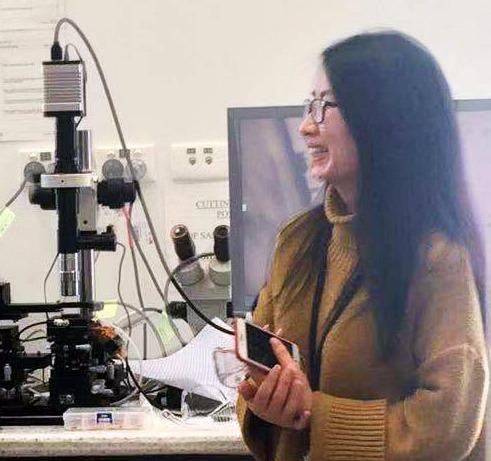Jul 12 2021
The discovery of iron-based superconductors with a relatively high transition temperature Tc in 2008 opened a new chapter in the development of high-temperature superconductivity.
 First author FLEET PhD Lina Sang (UOW). Image Credit: University of Wollongong
First author FLEET PhD Lina Sang (UOW). Image Credit: University of Wollongong
The following decade saw a ‘research boom’ in superconductivity, with remarkable achievements in the theory, experiments and applications of iron-based superconductors, and in our understanding of the fundamental mechanism of superconductivity.
A UOW paper published last month reviews progress on high-pressure studies on properties of iron-based superconductor (ISBC) families.
FLEET PhD student Lina Sang (University of Wollongong) was first author on the Materials Today Physics review paper, investigating effects on the superconductivity, flux pinning, and vortex dynamics of ISBC materials, including:
- pressure-induced superconductivity
- raising transition temperature Tc
- pressure-induced elimination/re-emergence of superconductivity
- effects of phase separation on superconductivity
- increasing critical current density
- significantly suppressing vortex creep
- reducing flux bundle size.
The review spotlights use of pressure as a versatile method for exploring new materials and gaining insight into the physical mechanisms of high-temperature superconductors.
SUPERCONDUCTORS: A BACKGROUND
In a superconductor, an electrical current can flow without any energy loss to resistance.
Iron-based superconductors are a type of ‘high temperature’ (Type II or unconventional) superconductor in that they have a transition temperature (Tc) much higher than a few degrees Kelvin above absolute zero.
The driving force behind such Type II superconductors has remained elusive since their discovery in the 1980s. Unlike ‘conventional’ superconductors, it is clear they cannot be directly understood from the BCS (Bardeen, Cooper, and Schrieffer) electron-phonon coupling theory.
In successive discoveries, the transition temperature Tc has been driven steadily higher.
“The ultimate goal of the research of superconductivity is finding superconductors with a superconducting transition temperature (Tc) at room temperature,” says Prof Xiaolin Wang, the node leader and theme leader of FLEET (also at the University of Wollongong) and Dr Sang’s PhD supervisor.
“Pressure can significantly enhance the Tc for the Fe-based superconductors. And recently, superconductivity was observed near room temperature in hydrogen alloyed compounds,” explains Prof Wang, who is Director of the Institute for Superconducting and Electronic Materials at the University of Wollongong.
THE STUDY
“Pressure effects on iron-based superconductor families: Superconductivity, flux pinning and vortex dynamics” was published in Materials Today Physics in May 2021 (DOI 10.1016/j.mtphys.2021.100414)
This work was support from the Australian Research Council through ARC Centre of Excellence in FLEET.